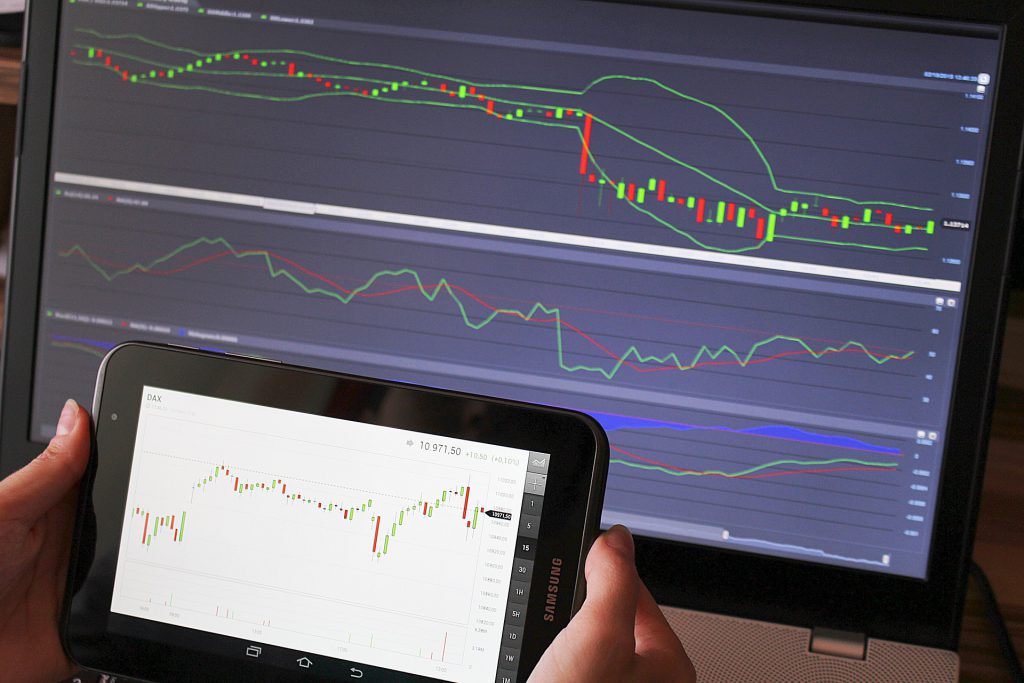
The foreign exchange market, also known as Forex, is touted to be the largest one in the world. A growing number of people are eyeing the opportunity to trade on the Forex market. This hardly surprises anyone familiar with its advantages, and namely no commissions, no fixed lot size, low transaction costs, high liquidity, and others.
Before you decide to place a trade on the Forex market, you have to be acquainted with certain strategies that will help you achieve the goals you set for yourself. There are hundreds of tips for Forex traders. However, some approaches appear to be better than others. Тhis guide about Forex strategies will cast light on some methods that are tried and proven.
Combining Relative Strength Index, Bollinger Bands and EMA
The term Bollinger Bands (BBs) is used to indicate market volatility. BBs consist of a centerline and two price channels (also known as bands). It helps traders to easily outline the trend which currently prevails on the market. There is a good-enough number of strategies associated with this indicator.
The Relative Strength Index (RSI) shows if an asset is overbought (trading takes place at a price higher than the assets’ intrinsic value) or oversold (assets are traded at a lower price than their fair value). It is considered that if RSI is over 70, the asset is overbought and if it is under 30, it is oversold.
One of the strategies we consider successful is based on a 75-period Exponential Moving Average (EMA), 20-period BBs, and a standard 14-period RSI. The period can be expressed in days, hours, etc. In case the candle closes the charts above the 75-period EMA and the BBs’ middle line, while the RSI is at a level higher than 50, then traders are recommended to go for long entries. In other words, traders buy assets hoping for the price to increase. In such cases, the market is called bullish.
On the contrary, investors need to opt for short entries (you sell in first, hoping for the price to drop) when the candle closes the charts below the 75-period EMA and the BBs middle line, while the RSI is at the level of 50 or lower. It is important to explain that when the price is expected to fall, the market is referred to as bearish.
The best way to set stop-loss orders is to look at the charts. When using this strategy, you can determine your loss levels based on the 75-period EMA, the lowest point that the signal bar indicator reached, or the lowest level of the most recent 5-period EMA.
Combining Fast and Slow Stochastic Oscillators with EMA
This strategy is built around the idea to keep track of the price rebound from the EMA. An important condition is that the fast stochastic oscillator should be in the opposite area of the slow stochastic. There are two zones where these can be found, and more precisely the overbought and the oversold areas. The best way to know what further actions to take is to observe the reversal bar pattern. The bouncing of the price off the 20-period EMA is considered an entry signal.
As far as the stop-loss order is concerned, investors are recommended to set a limit at 10 to 15 pips above the high of the reversal patterns in case the market is bearish and below their low if the market is bullish.
Combination of MACD and ADX
When tailoring personalized Forex trading strategy, investors should take into account the significance of open interest as it determines the upcoming trends and trend reversals. MACD (Moving Average Convergence Indicator) is used to keep track of the possible movements of the trend, as well as reversal points and the strength of the trend.
Due to its simplicity, many investors created their strategies around it. Assuming that the Positive Directional Indicator (+DI) is above the Negative Directional Indicator (-DI), it is a signal that investors can go for long entries. On the contrary, if the -DI is above the +DI, investors are not advised to take further actions.
Combination of EMAs and Parabolic SAR
Assuming that the candle closes the charts above a designated EMA period, the Parabolic SAR is under the candle, and the Slow Stochastic is not overbought, this is considered a favorable condition for investors to go long. In case the signal bar closes the charts under that designated EMA period, the Parabolic SAR is above the bar and the Slow Stochastic is not oversold, the market is bearish and investors are advised to go short.
Trading Pullbacks Following Gaps
The term “gap” is used to denote sharp fluctuations on the market resulting in a little trading activity. Usually, such situations are presented on the charts with a gap between two candles. As far as the Forex market is concerned, such gaps can occur mostly on Sunday evening.
It is of crucial importance to determine what kind of a gap occurs as this determines whether the gap will be filled out or not. What is more, it allows traders to predict how the market will look like after the gap. There are 4 major types of gaps – continuation, exhaustion, breakaway, and ordinary gaps.
Providing that a gap occurs, different investors will take various approaches. The best you could do out of such a situation is to buy when the price drops towards the support level and sell when the price starts rising towards the resistance zone. In case the price breaks up through the resistance zone, you are again recommended to buy. On the other hand, if the price breaks down through the support level, the best option for investors is to sell. As for the stop-loss orders, investors are advised to set them several pips below the support zone.
 3 Remote PC Access Solutions Worth Your Attention
3 Remote PC Access Solutions Worth Your Attention How Interest Rates Affect Bond Prices
How Interest Rates Affect Bond Prices